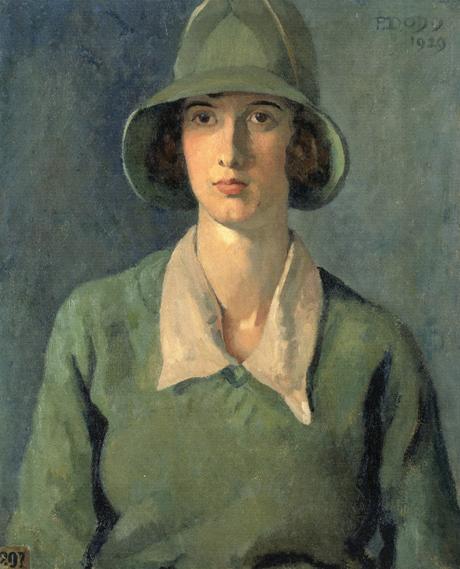
Tirzah Garwood was the wife of the mid century artist Eric Ravilious, whose work has been enjoying a much-deserved renaissance in recent years. The air of tragedy about him, lost in his prime over the Icelandic sea while working as a war artist, has only added to the appeal of his romantic, unsettling, marvellously modern watercolours, largely of the rural English landscape. However, behind every great man is an even greater woman, as the saying goes, and Tirzah Garwood is no exception. A highly talented artist in her own right, her ability to pursue her work during the years of her marriage to Eric was stymied by childrearing and illness, and so she has not received the lasting recognition she deserves. Hopefully, the reprinting of her autobiography, and recent renewed interest in her woodcuts, will change this. Her lively, vibrant voice and passionate interest in art and creativity sing out from this marvelous book, that chronicles not only the life of an artist and her friends, but that of an ordinary woman struggling to carve out a life for herself amidst the everyday drudgery of childcare and housework. For as much as the Ravilious’ life was glamorous and bohemian, surrounded as they were by illustrious friends and well-connected relatives, it was also beset by the banal concerns of all of our lives, from eccentric landladies to frozen pipes, broken heating to unwelcome guests. It is these observations of the ordinary that make this book so special; not the accounts of what such and such a famous person said or looked like, but how Tirzah coped with the many and various challenges her life threw at her, while still managing to maintain a sense of joy, wonder and impressive acceptance of the world she lived in.
Great Bardfield, in the depths of rural Essex, was the village where the young Raviliouses, alongside many of their artist friends such as Edward Bawden, lived for several years in the 1930s and 40s. They shared homes, lives and even partners, and the village itself seems to have been home to a great deal of eccentric types who provided plenty of color to what was often a hard existence. Anyone who fantasises about English country life should read this book to understand the reality of what living in unheated, unmodernised houses in the middle of nowhere was really like; there is very little romance in the drudgery of hauling buckets of water up several flights of stairs, wading through muddy lanes to get to a shop, and wearing fifty cardigans to keep warm in a house so cold you can see your own breath. There was much to entertain, too, of course; parties at the local manor, bonfire night celebrations, countryside rambles, picnics and endless sources of gossip, alongside the constant stream of new artist friends joining what swiftly became a close community of creative types who seemed to have few qualms about falling in love with each others’ partners. One of the most surprising things about this memoir is just how relaxed and open Tirzah was with discussing her sexuality and her feelings. She and Eric were openly unfaithful in a marriage that was much more complex and tumultuous than I had realised, and the requited and unrequited love affairs they had amongst their circle of neighbours and friends caused troublesome fractures of friendships that clearly preoccupied much of Tirzah’s energies during her time in Great Bardfield.
Tirzah did not intend for this to be read by anyone but her family, but it is a valuable and precious account of pre-war life that offers a fascinating insight into both an artistic life and the life of a woman brought up in the Edwardian era. So much of history deals in stereotypes and generalisations, and the impression we are given of women of this time always seems to place them at an impossible distance from our own existence. However, Tirzah paints a portrait of a thoroughly modern woman, living with thoroughly modern people, whose lives were just as complex as our own and certainly not ruled by the strict social standards historians seem to want to place pre-war life within. Tirzah’s approach to life was impressively reasonable, fair, refreshing; she loved freely and forgave freely, and never begrudged others for their failures. She did not have an easy life; Eric’s early death was devastating, as was her own protracted battle with the cancer that would eventually kill her, leaving her unable to see her children grow up, but she faced it with an irrepressible curiosity, fearlessness and zest that made me wish I had known her. This is a marvelous book, that is so much more than a glimpse into the world of the Great Bardfield circle of artists, and even if you know nothing – or care to know nothing – about them, it is worth reading for Tirzah’s generous, lively and wonderfully honest depiction of a woman’s life in the pre and post war era alone. I can’t recommend it highly enough.
Advertisements